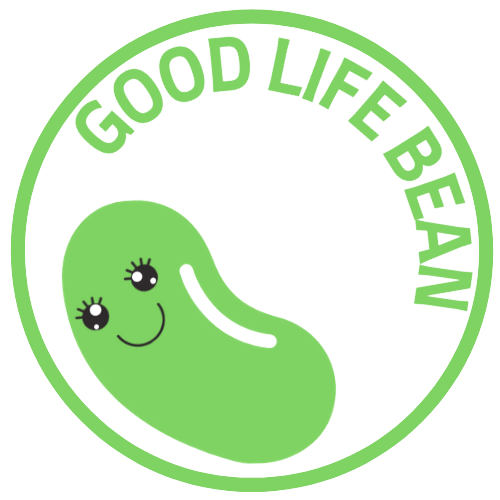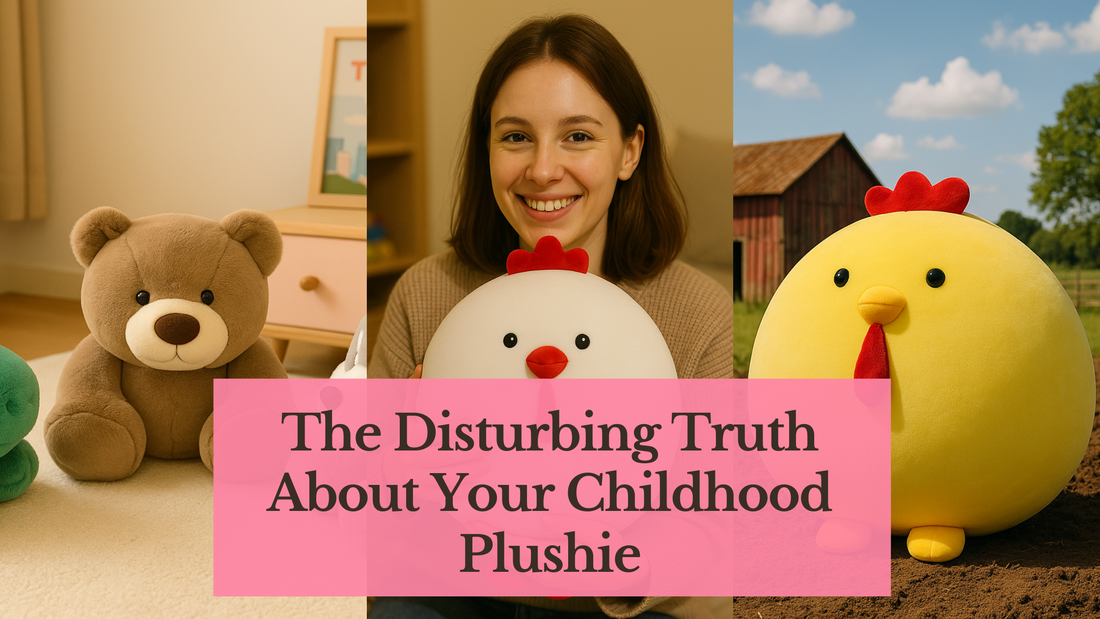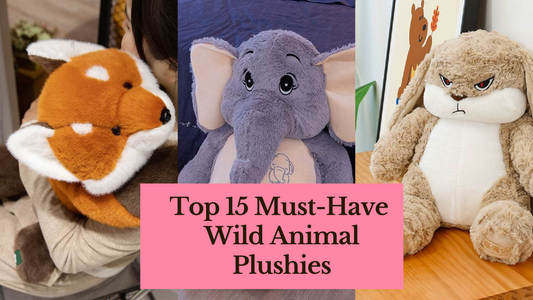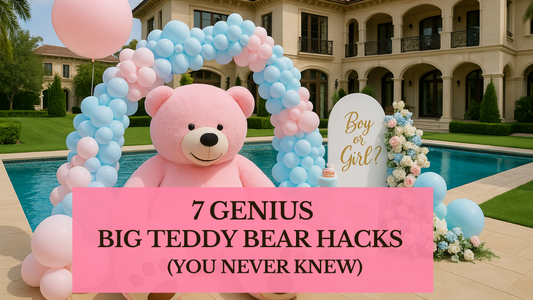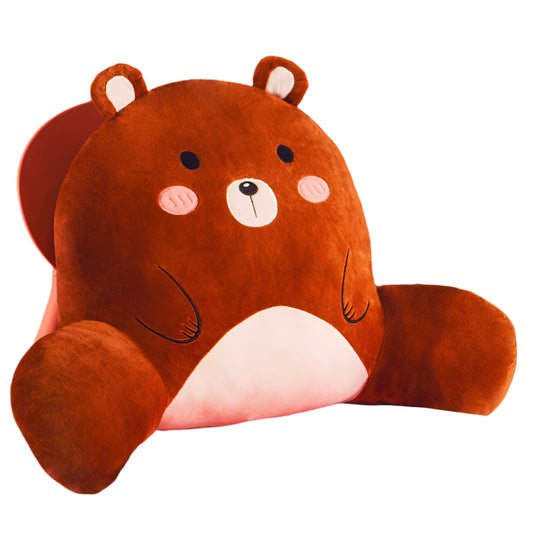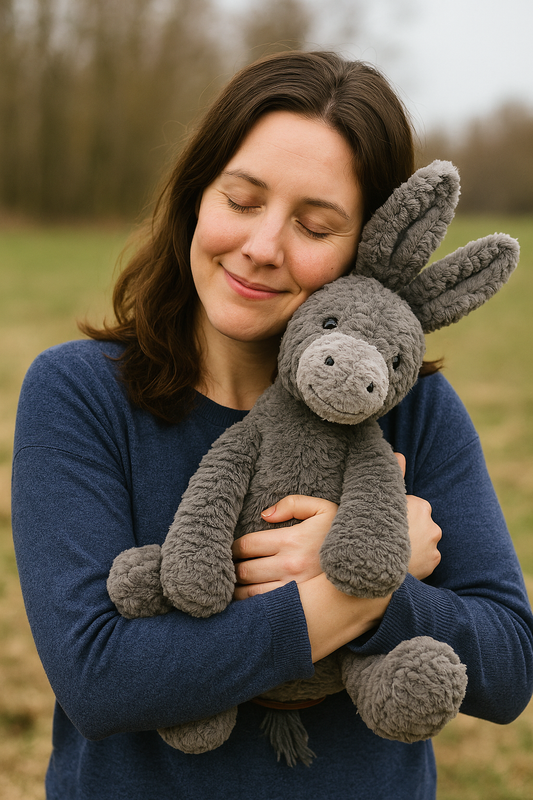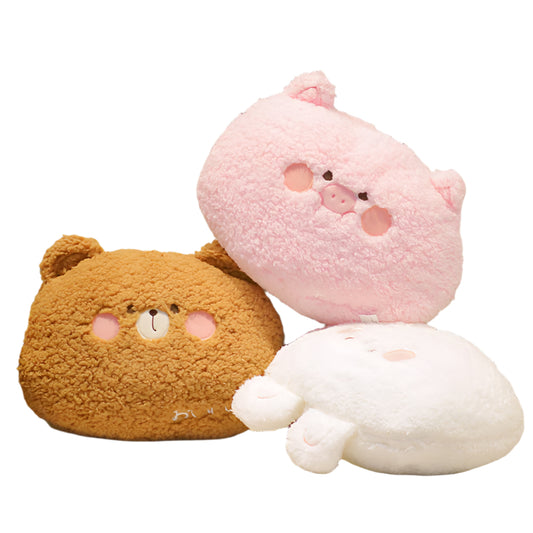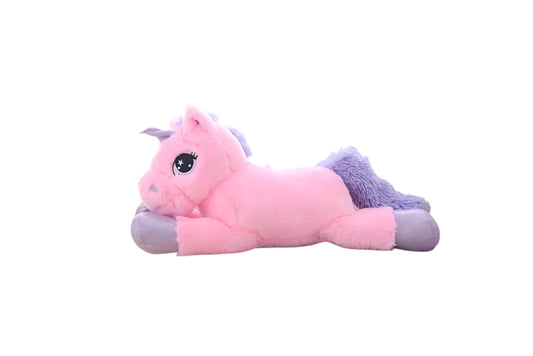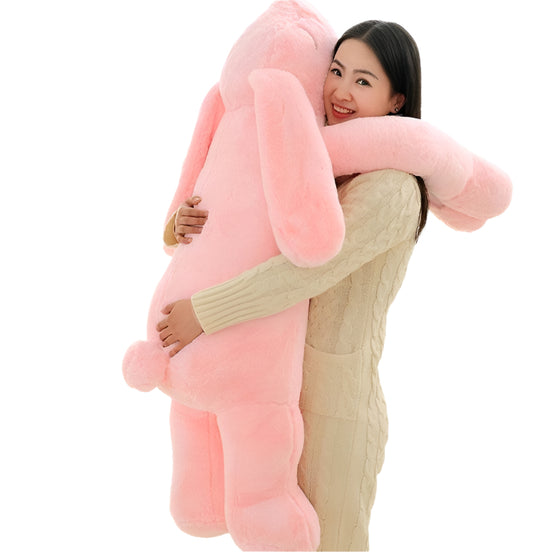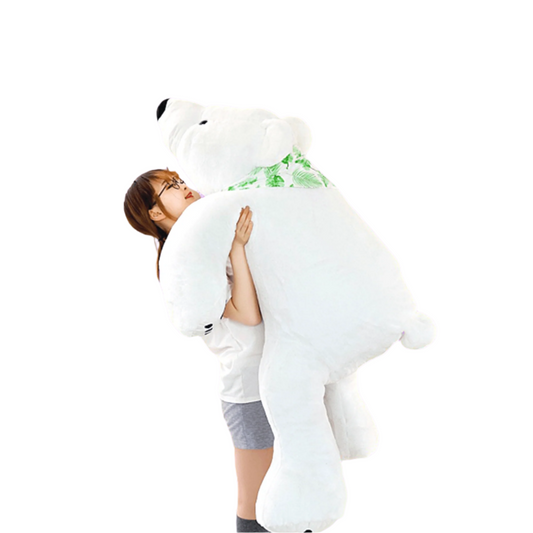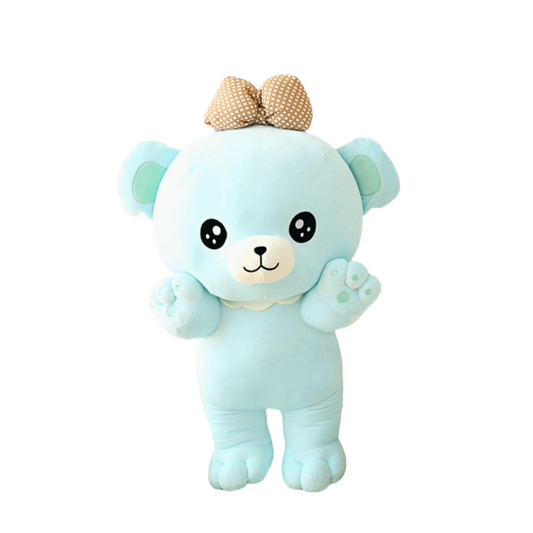The Cuddly Conspiracy: What Your Plushie Really Means
Remember how Linus from Peanuts never went anywhere without his blue blanket? Turns out, he wasn’t alone. Psychologists have a name for that favorite teddy, blanket, or bean-shaped buddy that helped you sleep through thunderstorms or first days of school: transitional objects. These “first not-me possession[s]” are self-chosen by a child to provide comfort, solace, predictability, and constancy. In other words, your plushie was basically a tiny therapist you carried around.
Why Plushies?
When we were kids, soft toys helped us cope with big emotions. Guardian readers report that even at age 60, some still recall feeling an “[intense] comfort and security” from a childhood blanket or teddy—like a mother surrogate on the road to independence. Those fuzzy details stuck because, from a scientific view, they’re bricks in the foundation of our attachment style.
- Sensorial Support: Plushies aren’t magic, but they use our senses. A squishy teddy’s feel, weight, or even smell helps lessen the stress of separation.(Ever heard of “scented” plushies?)
- Memories in Thread: Your old plushie carries the energy of you as a kid. It’s a tangible link to bedtime stories, scraped knees, and whispered fears. Our brains love that nostalgia: we lean into the past to keep ourselves stable in times of change. That’s why hugging your bear feels like a big, warm hug from younger you.
- Pro Tip: There’s no shame in keeping a teddy (or an army of them). These furry friends literally helped you grow up. They’re like tiny emotional anchors that you charted your babyhood with.
READ: Should You Keep Your Childhood Teddy Bear or Throw It Away?
1. Boo-Boos, Blankets, and Bears: Tales of Comfort
Consider Chris, a grown dad who once had a ragged blue cloth named “Boo-Boo.” Before his first day of school, his mom told him to throw it in the fire. Chris recalls, “I had a sense of loss, an emptiness, without understanding.” But the memory stayed crystal clear: “My Boo-Boo provided me with the comfort and security I craved…a bit like I wanted my mum with me all the time when I was little,” he said (Don’t worry, Boo-Boo didn’t make it to preschool camp; Chris eventually accepted the change.)
Think of Linus’s blanket, or an autistic child clutching a weighted teddy when the mall music gets too loud. Stuffed animals can be shockingly powerful coping tools. For many on the spectrum, a favorite teddy bear “can be very calming, helping reduce anxiety and stress in overwhelming situations.”It’s like a built-in therapy session—no insurance needed.
2. Nostalgia, Anxiety, and the Neurodivergent Nexus
Why do we adults still treasure these childhood sidekicks? Because our inner children aren’t done talking! Emotional truths play a big role:
- Nostalgia as a Comfort Shield: In times of stress or change, nostalgia literally stabilizes us. For example, during the pandemic many found solace in retro movies and old songs, saying nostalgia “keeps in mind what they cherish most”. Cuddling your old plushie is a similar time-travel trick — it anchors you to a simpler, cozier world.
- Neurodivergent Sensory Need: If you’re neurodivergent (ADHD, autism, anxiety, etc.), plushies aren’t childish fluff—they’re an essential lifeline. Many on the autism spectrum love the softness and consistency of a stuffed toy. As one article puts it, a teddy bear can offer “emotional solace” and become a great source of security for autistic individuals. Weighted stuffed animals even simulate a hugging pressure that calms nerves, a bit like a wearable hug or a portable blanket fort.
- Anxiety’s Best Friend: Imagine that panic knot when you’re anxious or upset. Holding your childhood bear can un-knot it, at least a bit. One study found 40% of adults still sleep with a teddy bear. That’s right: nearly half of us benefit from a bedtime snuggle buddy, proving we all sometimes need a soft shoulder to cry on. Phones and water bottles can be modern comfort objects, but let’s be real — nothing beats a warm fuzzy hug from a plushie.
Friendly Reminder: If hugging a teddy bear makes you feel safe, you’re not being "childish." (Bringing Gloria to an exam? Maybe dial it back, but keeping one on your bed? Totally normal.)
3. When Plushies Grow Up with You
Some adults scoff at this, but psychology says it’s actually healthy. Keeping a plushie can be part of re-parenting your inner child. Think of it as giving the younger version of you the support you needed. Stuffies become “representational[s] of a stable and predictable world”psychologytoday.com. They quietly reassure you that someone (even if it’s just a teddy) is holding space for your feelings.
For people healing from trauma or loss, a plushie can be a judgment-free friend, offering silent support when real people can't be there. In lonely spells, hugging a bear can feel like a momentary fix for that ache. It’s sort of like carrying a piece of home around with you.
4. The Great Plushie Dilemma: Keep, Donate, or Burn?
So, should you ever let go of that fuzzy tyrant on your shelf? Ah, the million-dollar question. On one paw, your plushie is a treasure trove of memories. On the other, it’s…well, often dusty, worn, and maybe a little dead inside. Here’s the tension:
Reasons to Keep Your Childhood Stuffed Animals:
- Sentimental security: Every snuggle is a reminder you survived toddlerhood, teenage heartbreak, or weird anxiety phases.
- Comfort on demand: Bad day? Your old friend is there with open arms (and zero judgment).
- Inner child handshake: It says you’re still in touch with who you were, not just who you’ve become.
Reasons to Retire or Donate Your Childhood Plushie:
- Growth and space: Maybe your life has changed (pet allergies, a minimalist phase, or just a smaller closet).
- The next chapter: Holding on forever can feel like you’re stuck in the past. Sometimes it’s brave to say goodbye and make room for something new.
- Helping others: Donating it could give a child in need their first lovey. (Plus, it’s hard to donate a stuffed soul after it’s got teeth marks.)
💔 FYI: Saying goodbye sucks. Anthropologists note parents often apologize when handing a transitional object to a child for the first time—turns out even they feel weird about it. So go gentle on yourself if letting go feels “wrong.”
5. The Guilt Factor
If there’s one scary thing about purging plushies, it’s the guilt trip. (“Poor Fuzzy Bear! I raised you!”) We get it. You’re not heartless if you feel a pang. But here’s the real scary truth: sometimes an old plush can keep us from embracing healthier coping skills or new, better fits for our adult life.
Remember Chris’s story: his mom made him toss Boo-Boo, which felt like loss at the time. But he came out fine. In fact, telling stories about Boo-Boo years later brought comfort, not trauma. The lesson? It’s not your fault if you outgrow it — it’s just life’s weird way of telling you to make another memory.
- Keep vs. Clean vs. Gift: Consider upcycling your pals. A ritual goodbye ceremony, a donation, or even a creative photo shoot can honor their role. Then, if you truly need a snuggle, it’s perfectly okay to find a new plush friend (we’ll get to that).
💡 Pro Tip: If parting is hard, try insuring your feelings first: thank your plushie for the years of support, then treat yourself to a new one. It’s like trading an old car for a newer model — same soul, better air conditioning.
Upgrading Your BFF: Introducing Your New Plushie Bestie
Welcome to Goodlifebean, where we believe your next plushie should fit your grown-up life. If you’re scrolling late at night, biting your lip over the plushie decision, take a breath. Switching to a Goodlifebean cuddle buddy isn’t betrayal – it’s self-care with style.
We designed these plushies with adults in mind. They’re soft yet sophisticated, big enough to hug through insomnia, and made to handle hugs without falling apart. Think of them as the coach to your veteran team of childhood toys: wiser, stronger, and strategically fluffier. We’re not saying your old bear can’t see other people… but a new cuddly plushie is a whole new chapter in your emotional support system.
Why Plushies Designed for Adults?
🧸 Adult-sized hugs: Our plushies are often bigger than baby ones, so they feel more like cuddling a very soft roommate.
🌿 Made with love: Ethically sourced materials that stand up to adult use (and accidental coffee spills).
🛀 Washable and Wondrous: Because grown-up things get dirty. (Yeah, your kid’s unicorn never saw a load of laundry, did it?)
🎨 Real AF designs: They come in colors and outfits that won’t clash with your living room or embarrass your friends.
Think of a collection like an emotional support squad for your feelings. From calming colors to squishy textures, each plushie is a fuzzy hug designed to reduce anxietyand boost your mood.
👉 Curious about keeping vs. tossing childhood items? Read Letting Go (Gently) of Beloved Keepsakes for tips on making peace with change.
When to Hold On, When to Let Go?
Still not sure? Try this mini checklist in your next “teddy sorting session”:
- Does hugging it still make you feel good, or is it just out of habit?
- Can you picture enjoying this plush next year — or is it more museum piece than friend?
- Will a fresh Goodlifebean plushie beside it double your comfort (or triple)?
Your plushie’s worth is not measured by tears shed at Parting-Party. It’s the journey, silly. And guess what: you can have multiple journeys. You can keep some old pals and still welcome new ones. The past doesn’t have to dim your future.
Ready to Meet Your New BFF (Best Furry Friend)?
- 🌟 Explore Our Giant Plushies: Goodlifebean Shop
- 💌 Gift Yourself (or a friend): Because grown-up self-care is in style.
No doom or gloom here: upgrading is all about love, not guilt. If your heart says “yay teddy,” then keep them both!
Either way, your inner child will be proud. And remember: the best plushie doesn’t judge, bite back, or text your ex behind your back. 😉
Join the movement: Share your plushie story! Whether it’s a tearful goodbye or a new buddy debut, tag us or check out other cozy stories on Goodlifebean’s blog.
Plushies are powerful emotional allies—from infancy to adulthood. They guard your toddler fears and whisper comfort to your anxious nights. Whether you keep your childhood bear or pass the baton to a brand-new Goodlifebean plushie, do it with love and zero shame. After all, life’s too short for unhappy hugs.
Ready for a fresh snuggle? Discover your new favorite kawaii plushie today. You (and your inner child) deserve it.
